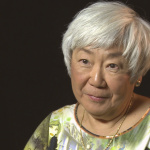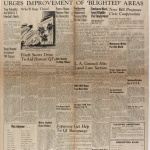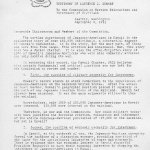Hawaii Territorial Guard
Guardsmen of civilian locations in wartime Hawai'i, future members of the Varsity Victory Volunteers and the 442nd Regimental Combat Team . [1]
Following the Pearl Harbor attack on December 7th , Hawai'i's governor, Joseph B. Poindexter ordered the mobilization of a Territorial Guard around 10:00 a.m. Subsequently, the University of Hawai'i's Reserve Officers' Training Corps (ROTC) was called to duty and its members became the nucleus of the new Hawaii Territorial Guard that was primarily an "anti-sabotage force." Other individuals, including many from high school ROTC units, were rapidly enlisted, and soon the guard numbered 35 officers and 370 men. The Territorial Guard doubled its membership the second day of the war, and by December 31, it had 89 officers and 1,254 men on guard at 150 posts. General Short estimated that it relieved six companies of infantry for combat duty.
Members were assigned to guard important civilian locations including the governor's residence at Washington Place, bridges, pumping station, wells, the territorial archives, water tanks, and high schools as Punahou School and Farrington High School which were used as emergency hospitals. Guardsmen were also stationed at the FBI office, courthouses, electric substations, and telephone exchanges. Some patrolled Kaneohe Hospital, Fort Armstrong Post Exchange, and even the headquarters of the Hawaiian Pineapple Company. One of the guard's responsibilities was to oversee the eviction of Japanese Americans from approximately thirty areas considered militarily sensitive. One location was Lualualei Homesteads, adjacent to a munitions storage facility near Pearl Harbor. Although it is unlikely that any Nisei participated in the removal of Japanese families from Lualualei Homesteads, this event revealed the growing community fear of Japanese Americans that resulted in discharging individuals of Japanese American ancestry from the Territorial Guard after six weeks without explanation or warning. On January 21, 1942, Colonel Thomas Green, aide to General Delos Emmons inactivated the Territorial Guard "due to the fact that the police force has been augmented and improvements in the protection of vital installations have been increased." The Headquarters unit was maintained and at least one Japanese American was temporarily retained to type out discharge papers for their colleagues.
Subsequently, the discharged guardsmen petitioned the military governor "for whatever service you may see fit to use us" and were accepted into a labor battalion attached to the 34th Combat Engineers Regiment. Although officially known as the Corps of Engineers Auxiliary these Varsity Victory Volunteers, or VVV's as they called themselves, lived for eleven months at Schofield. The average age of the group was twenty; twelve were recent college graduates and nearly all others were university students. During that time they labored on O'ahu, quarrying rock, stringing barbed wire, and building dumps, military installations, roads, and warehouses. At their request, they were inactivated a year later in order to respond to the call for army volunteers and many became members of the 442nd Regimental Combat Team.
For More Information
Allen, Gwenfread. Hawaii’s War Years. Westport, Connecticut: Greenwood Press, Publishers, 1950.
Dye, Bob ed. Hawaii Chronicles III: World War Two in Hawai'i, From the Pages of Paradise of the Pacific . Honolulu: University of Hawaiʻi Press, 2000.
"Hawaii Territorial Guard." Excerpt from interview with Yoshiaki Fujitani. The Hawaii Nisei Story website.
Odo, Franklin. No Sword to Bury: Japanese Americans in Hawaii during World War II . Philadelphia: Temple University Press, 2004.
Footnotes
- ↑ Research for this article was supported by a grant from the Hawai‘i Council for the Humanities .
Last updated Feb. 12, 2024, 9:59 p.m..








